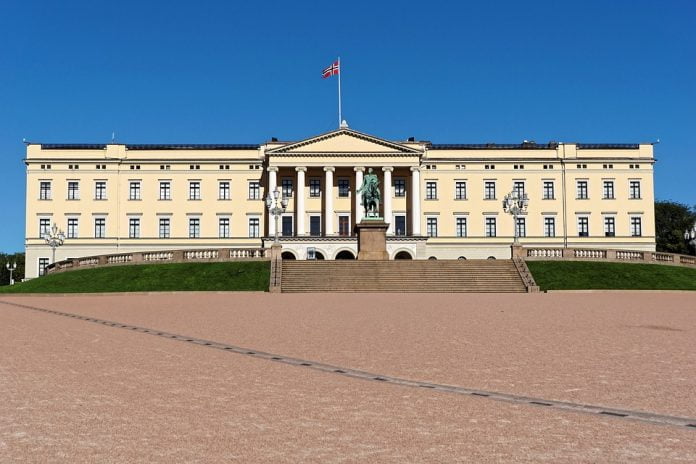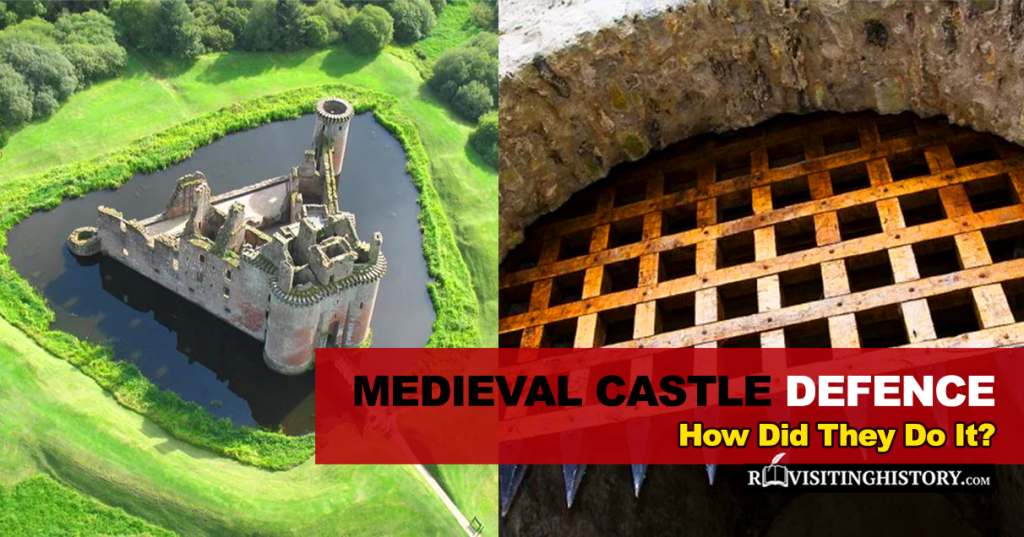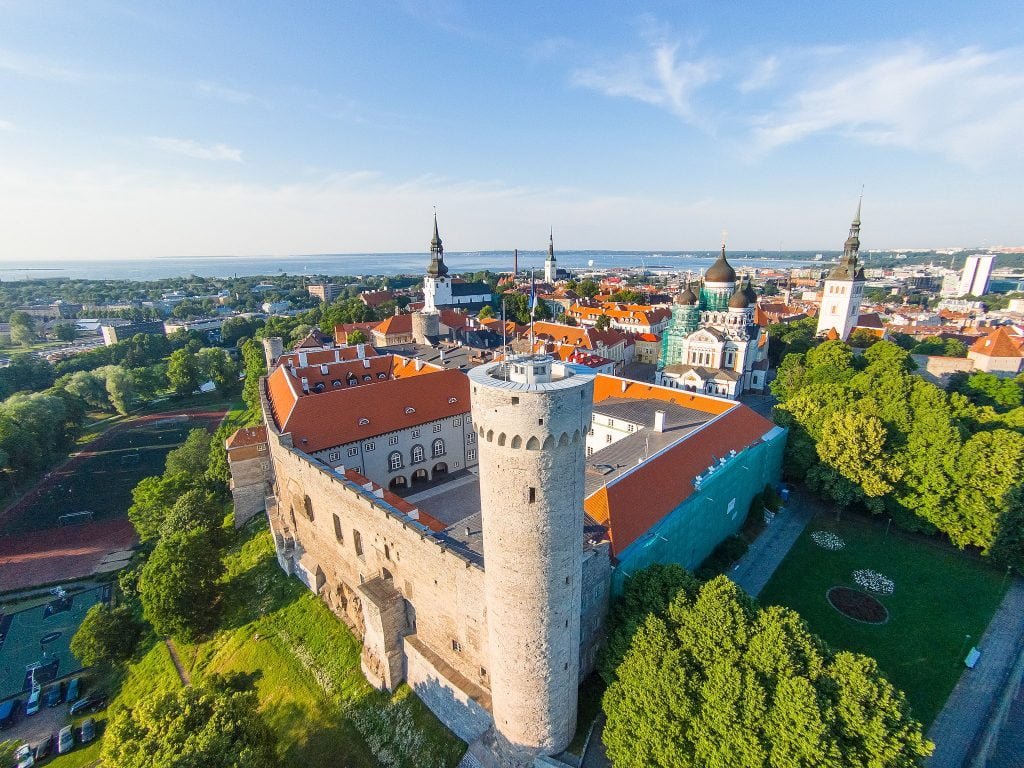Serving as a presidential palace since the nineteenth century, the Royal Palace of Oslo is the epitome of neo-classical architectural beauty with its classical columns that resemble the ancient buildings of the Greeks and Romans. The palace is still in use today, it serves as the primary residence for the Norwegian Monarchy and hosts official dinners for foreign officials and guests.
To delve deep into the history of the castle and its unique characteristics that make it stand out in history, let us take a detailed look at the Royal Palace of Oslo in the coming sections.
Table of Contents
Apart from being one of the largest capitals, the host city of the Royal Palace of Oslo is also one of the most expensive cities in the world.
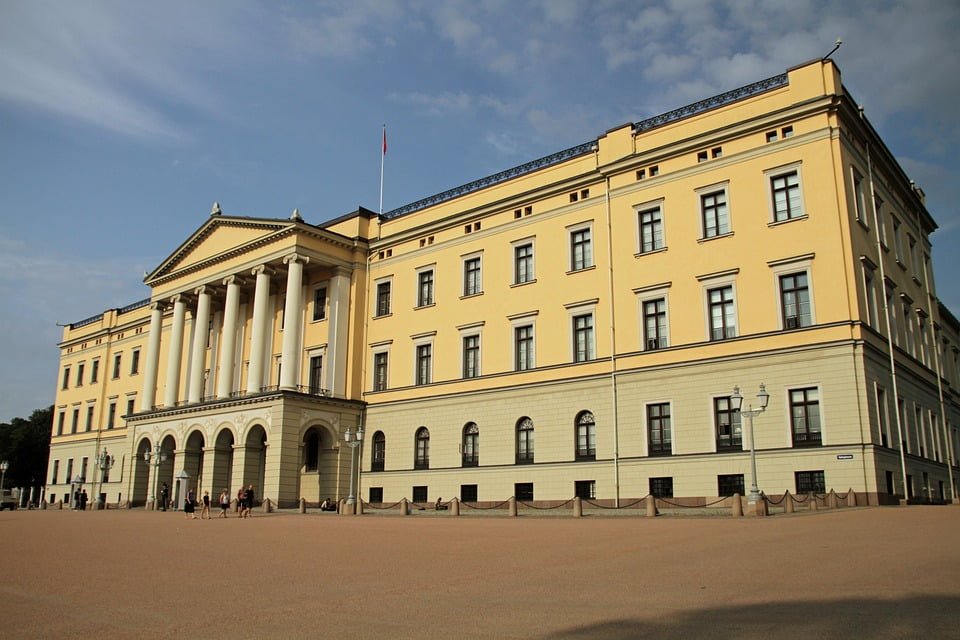
Frequently Asked Questions
Where is Royal Palace of Oslo Located?
The Royal Palace of Oslo is located in central Oslo, Norway. The Palace stands tall at the end of Karl Johan’s Gate, surrounded by the Palace Park and the Palace Square at the front.
When was Royal Palace of Oslo Built? Who Build It?
The Royal Palace of Oslo was built in the nineteenth century as a residential quarter for King Charles III John of Norway.
When is The Best Time to Visit the Palace?
The best time to visit the Royal Palace of Oslo is during the summer months when the castle is officially open for visitors.
What Other Monuments are Located Nearby?
The Royal Palace of Oslo is surrounded by numerous historical monuments like the Palace Park, Queen’s Park, and several famous sculptures, including statues of the defender of women’s rights and author, Camilla Collett; Queen Maud; and mathematician Niels Henrik Abel.
FOR HISTORY | BEAUTIFUL IMAGES | INTERESTING FACTS | TRAVEL TIPS
Early History
Constructions of the Palace
The site for the construction of the palace was chosen by King Charles III John and commissioned to Danish architect, Hans Linstow. The construction of the palace started in 1821 and continued for the next twenty years, with the palace receiving its final touches during the late 1840s. The palace was originally planned as a two-story building with projecting wings on both sides of the main veneer.
However, the budget for the palace exceeded the expected amount, causing the construction to stop in 1827. The construction of the palace later resumed in 1833 when Linstow revised the project to a less costly option by eliminating the originally-planned ‘projecting wings’, adding a third story to the building instead. The Royal Palace chapel was constructed in 1844, followed by religious services beginning at the palace.
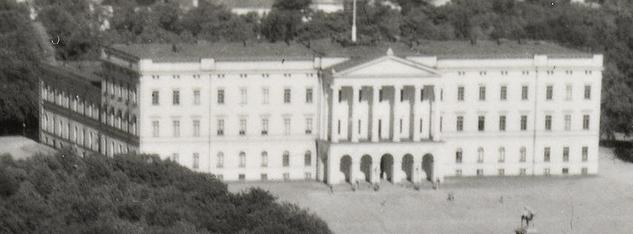
The Royal Palace of Oslo during the Bernadotte Dynasty
The intended resident of the palace, King Charles John, never got the chance to live in the palace, dying before its completion in 1844. The first occupant of the palace was his son Oscar I and his queen, Josephine. During this time, several modifications were made to the castle from extending its wings facing the front garden to the replacement of the provisional steep roof with a more elegant flat roof. The palace during the Bernadotte dynasty was mostly used as a vacation house by the royal family instead of a permanent residence.
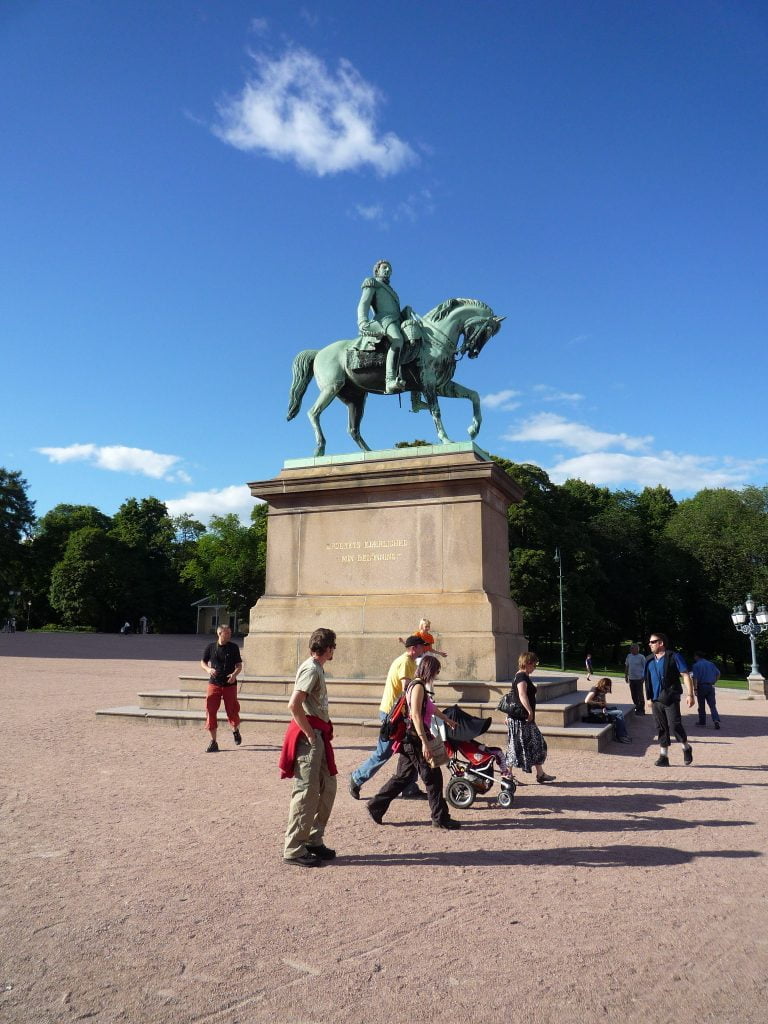
Permanent Royal Residence
The Bernadotte dynasty was replaced by Prince Carl of Denmark, also known as Haakon VII of Norway. He became the first monarch to use the palace as a permanent residence for the King. Hakon VII became the first monarch to greet the children’s parade from the palace balcony during the Norwegian Constitution Day celebration in Oslo. He also introduced the weekly meetings with the Council of State in the palace vicinity, a tradition that is still practiced today.
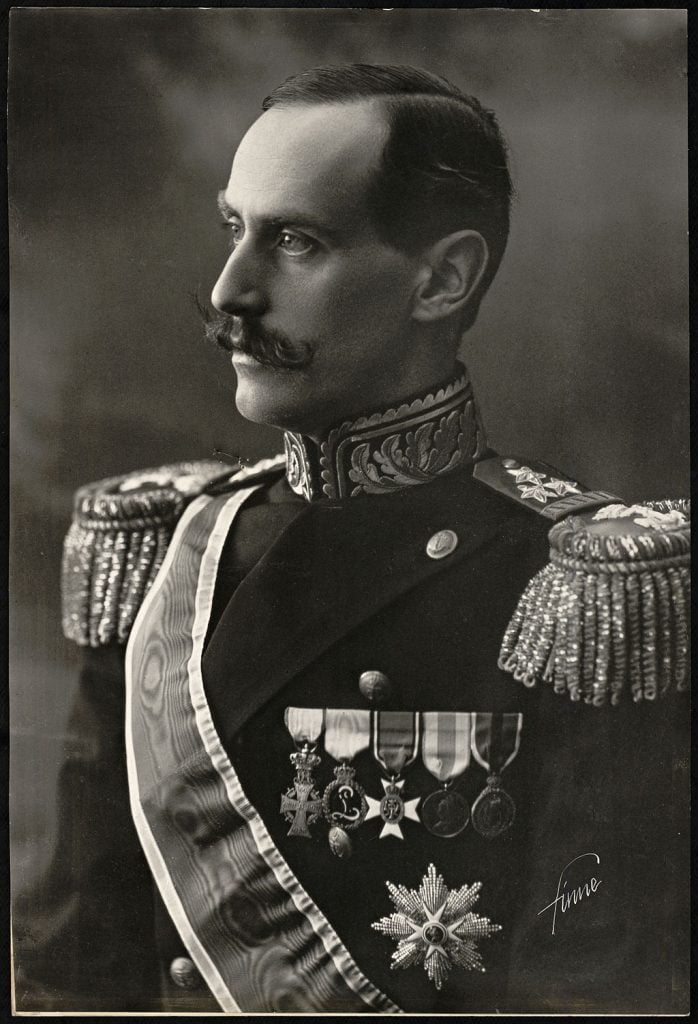
Revisit More Historic Places Below or Read Further
Current Times
From the years 1954 to 1991, the Royal Palace of Oslo underwent heavy renovation where the poorly-built original structure was renovated and improved along with the incorporation of modern technologies including the alarm systems and modernization of the palace interior. Once the renovations were completed, the monarchs returned to the Royal Palace in 2001.
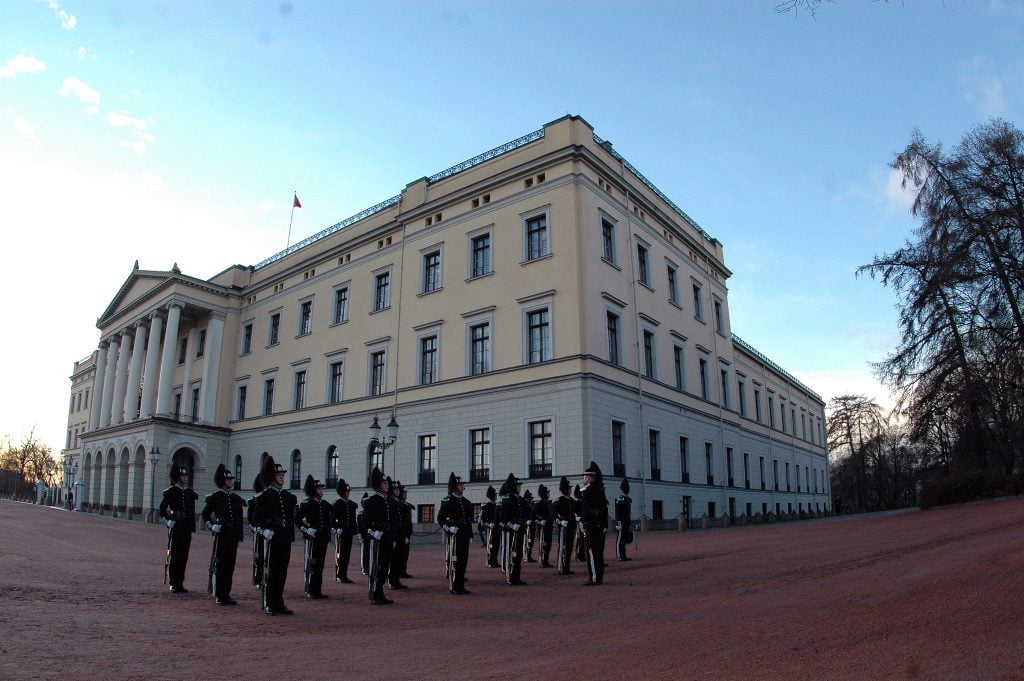
The palace still serves as the residence for the Crown today, guarded by Hans Majestet Kongens Garde, the Royal Guards. The palace opened for public tours in 2002 to visit its splendor. The guard changing ceremony, daily at 13:30, has become a major tourist attraction along with the lush gardens, statues of past kings and queens, and of course the attraction of the palace itself.
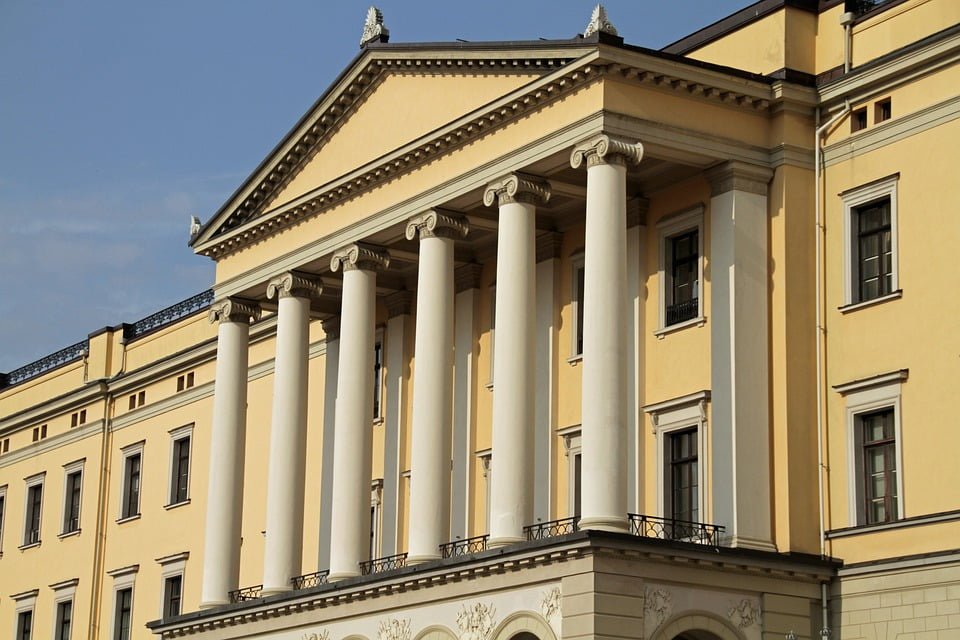
Interesting Royal Palace of Oslo Facts
- The city of Oslo where the Royal Palace is located is among one of the largest capitals of the world, with more than 80% of the land consisting of parks, forests, hills, and lakes.
- Apart from being one of the largest capitals, the host city of the Royal Palace of Oslo is also one of the most expensive cities in the world.
- The Royal Palace is built in the neoclassical style with stuccoed bricks which gives an archaic vibe to the palace.
- The Palace of Oslo was originally designed in the shape of an H-shaped building with a temple facade in the front. However, the design was later simplified because of its costly nature.
Visiting Royal Palace of Oslo – Tips and Tricks
You cannot visit the Royal Palace of Oslo on the spur of the moment. Instead, you need to book your reservation before visiting this neoclassical wonder as the palace only offers guided tour visits. Here is some helpful information to help you get around the Royal Palace of Oslo.
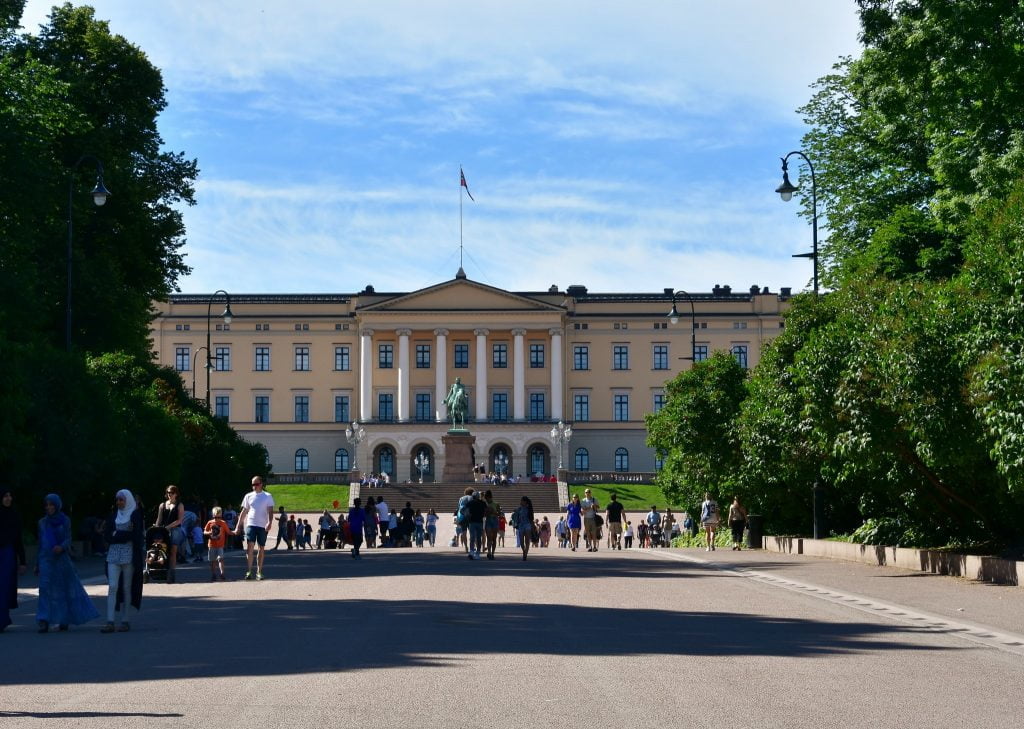
How to get to the Royal Palace of Oslo?
The easiest way to get to the Royal Palace of Oslo is via public transport. You can use the buses 33, 130N, 140N, 15, 160, 250, 250E, 250N, 255E that stop at the National Theatre located in front of the Royal Park. There is also car parking available at Holbergs Gate from which you can walk to Frederick’s Gate to reach the palace.
Ticket Prices, Visiting Hours & Travel Tips
Information was checked & updated on October 29, 2023.
The palace is open for visitors seven days a week. However, prior reservation is required to visit. The visiting hours for the palace tours are 12 pm to 5 pm on Fridays, whereas for the rest of the week the palace is open for visits from 11 am to 5 am. However, the best hours to visit the palace are between 11 am to 2 pm, as you can easily catch up with a tour group to see around the palace.
The ticket pricing to tour the whole palace is 175 NOK ($16 USD) for adults. For children, elderly people, and Students, the ticket price is 145 NOK ($13 USD). For children under 3, entry is free of cost. In addition, the individuals with disabilities are also assisted during the tour and admitted free of charge.
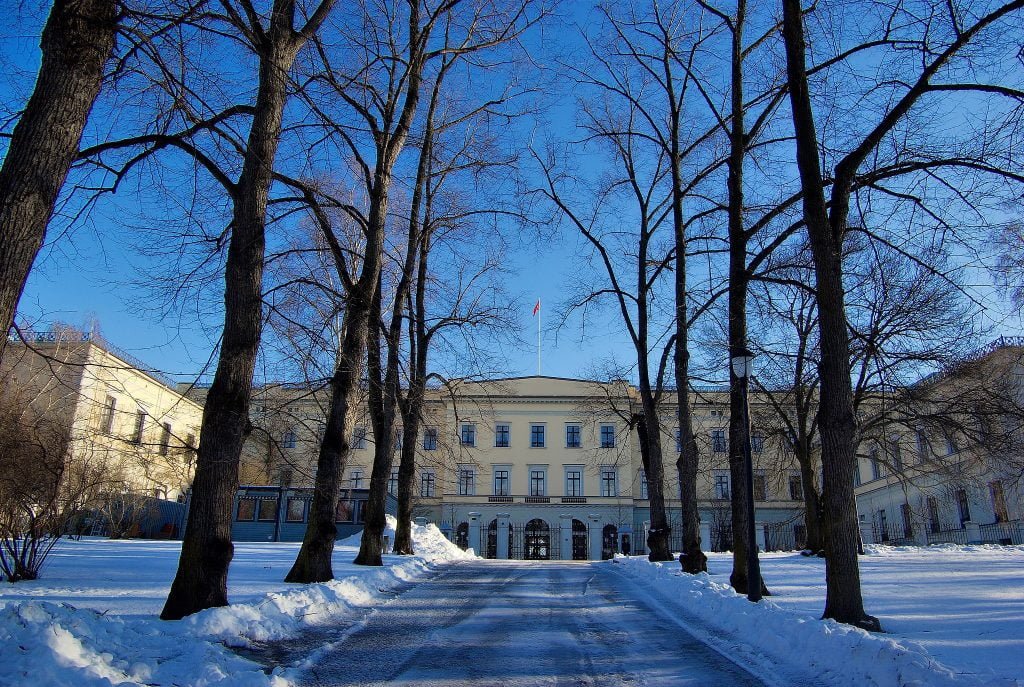
How Long Will It Take to Tour Around?
It can take about an hour to visit the palace under the supervision of a tour guide. There is a tour every twenty minutes during the visiting hours.
There is a lot to see when visiting the Palace of Oslo, therefore, take your time when visiting the palace. The adjacent garden and the park outside are also a sight to seek. Make sure to revel in the beauty which this beautiful place has to offer.
Up to Date Information
For up to date ticket prices and visiting hours visit the official website: https://www.visitoslo.com/en/product/?TLp=181645
Some words of advice and tips:
- The entrance to the palace is from its west gate facing the Parkveien (parking lot).
- The parking lot is only available for visitors with prior reservations and for the disabled.
- In addition, you can request a wheelchair if you are traveling with a disabled individual.
- Be mindful that mobile phones and photography are not allowed in the palace.

